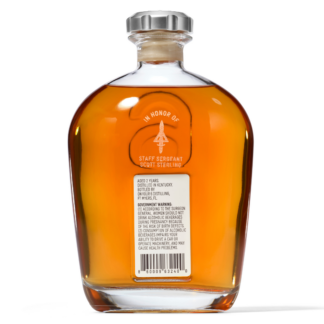In the fall of 1941, with war raging in Europe and ominous rumblings in the Far East, John F. Kennedy applied for the Army’s officer candidate school but was rejected and classified 4-F because of his bad back, ulcers, and asthma. Disappointed, he wrote to a friend, “I am rapidly reaching a point where every one of my peers will be in uniform, and I do not intend to be the only one . . . wearing coward’s tweeds.” He contacted Captain Alan Kirk, who had been his father’s naval attaché when Joseph Kennedy was the U.S. ambassador to the United Kingdom, for assistance. In October 1941, Kennedy was appointed an ensign in the U.S. Naval Reserve and joined the staff of the Office of Naval Intelligence.

Patrick Henry McMahon, the engineer, was badly burned.
Commanding the Patrol Torpedo Craft, USS PT 109, Lieutenant, Junior Grade, John Kennedy and his crew participated in the early campaigns in the Allies’ long struggle to roll back the Japanese from their conquests throughout the island chains of the Pacific Ocean. The role of the small but fast PT boats was to attack the Japanese shipping known as the “Tokyo Express” that supplied Japanese troops in the islands, and to support the US Army and Marine Corps attacking the Japanese on shore.
On August 2, 1943, as PT 109 was running silent to avoid detection it was struck by the Japanese destroyer Amagiri. Traveling at 40 knots, the destroyer cut PT 109 in two. The entire crew was thrown into the dark waters and engineer Patrick Henry McMahon was badly burned. Kennedy, who had been on the Harvard swimming team, took McMahon in tow and headed 4 miles to a small island to the southeast. It took forty-five minutes to make what had been an easy hundred yards.
On the way in, Harris said, “I can’t go any farther.”
Kennedy, of the Boston Kennedys, replied, “For a guy from Boston, you’re certainly putting up a great exhibition out here, Harris.”
Harris didn’t complain again. All eleven survivors made it to the island after having spent a total of fifteen hours in the water.

After four days on the island, with the help of a message on a coconut carried by local islanders, Kennedy swam to safety and was greeted by an Australian who was spying on the Japanese. That night, Kennedy waited in a war canoe at an arranged rendezvous for a U.S. PT. Shortly after the moon went down, Kennedy heard the signal he was waiting for—four shots. He then fired four answering shots.
A voice shouted to him, “Hey, Jack!”
Kennedy said, “Where the hell you been?”
The voice said, “We got some food for you.”
Kennedy replied, “No, thanks, I just had a coconut.”
A moment later a PT came alongside. Kennedy jumped onto it and hugged the men aboard—his friends. In the American tradition, Kennedy held under his arm a couple of souvenirs: one of the improvised paddles and the Japanese gas mask.
Kennedy was later awarded the Navy and Marine Corps Medal for his heroics in the rescue of the crew of PT 109, as well as the Purple Heart Medal for injuries sustained in the accident on the night of 1 August 1943. An official account of the entire incident was written by intelligence officers in August 1943 and subsequently declassified in 1959. As President, Kennedy met once again with his rescuers and was toasted by members of the Japanese destroyer crew.

Four months after his inauguration, President Kennedy personally delivered a special message to the Congress on 25 May 1961 entitled, “Urgent National Needs.” He declared:
“I am directing the Secretary of Defense to expand rapidly and substantially, in cooperation with our Allies, the orientation of existing forces for the conduct of non-nuclear war, paramilitary operations, and sub-limited or unconventional wars. In addition, our special forces and unconventional warfare units will be increased and reoriented. Throughout the services new emphasis must be placed on the special skills and languages which are required to work with local populations.”
This was the closest he came to actually directing formation of SEAL Teams.
While they began organizing as early as November 1961, two SEAL Teams were officially authorized by the CNO that December, and both units were formally established in January 1962. Their mission: conduct unconventional warfare, counter-guerrilla warfare, and clandestine operations.

SEAL Team ONE was located at the Naval Amphibious Base (NAB), Coronado, California and co-located with UDT-11 and UDT-12. SEAL Team TWO was positioned at NAB, Little Creek, Norfolk, Virginia and co-located with UDT-21. The existing UDTs supplied the manpower to establish the new SEAL Teams. At the time of their establishment, and throughout much of the Vietnam conflict, the existence of these new units remained highly classified.

John F. Kennedy Library
Naval History and Heritage Command
Navy Seal Museum
New Yorker, 1944
U.S. Naval Institute








